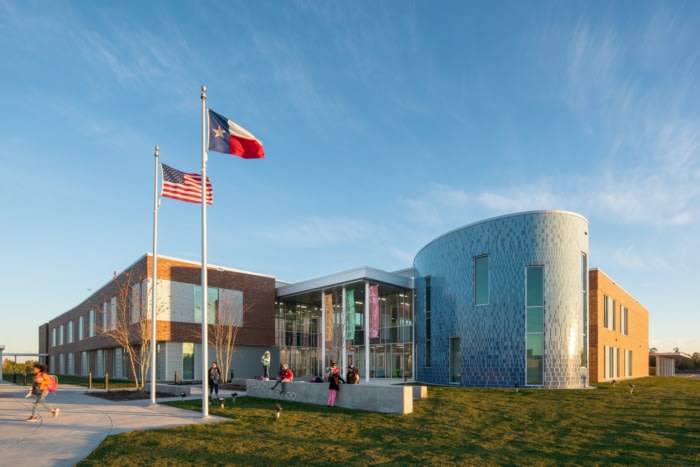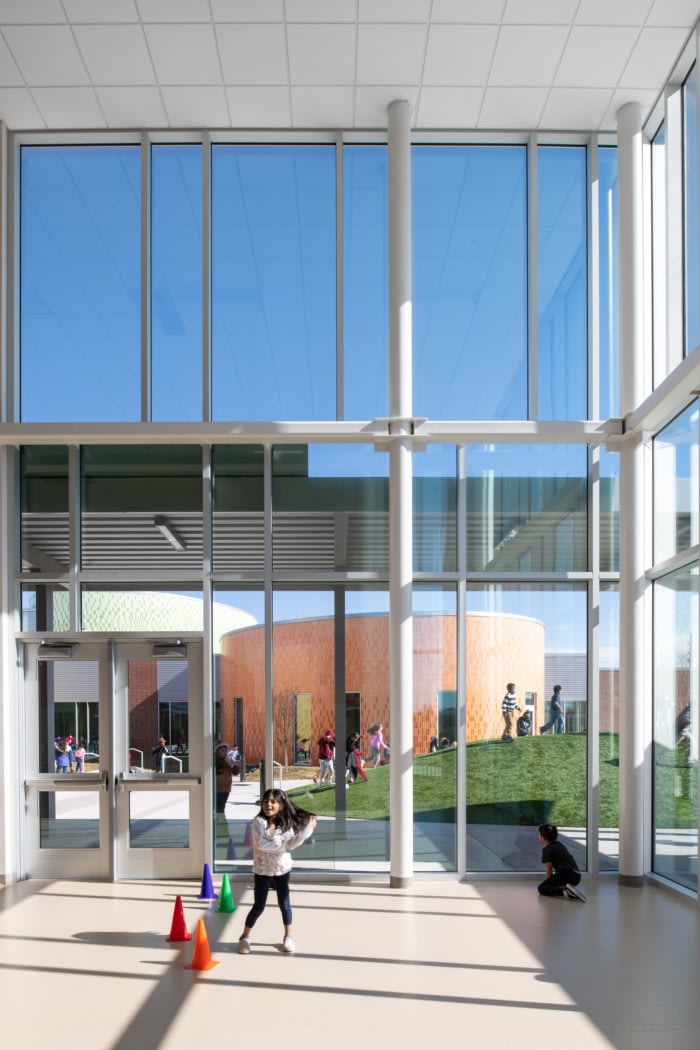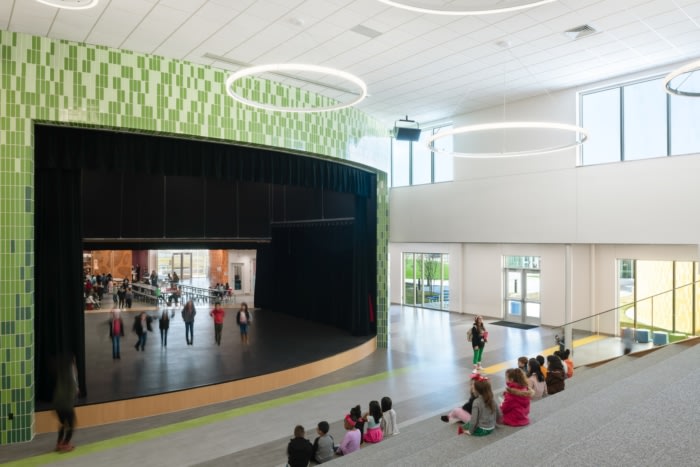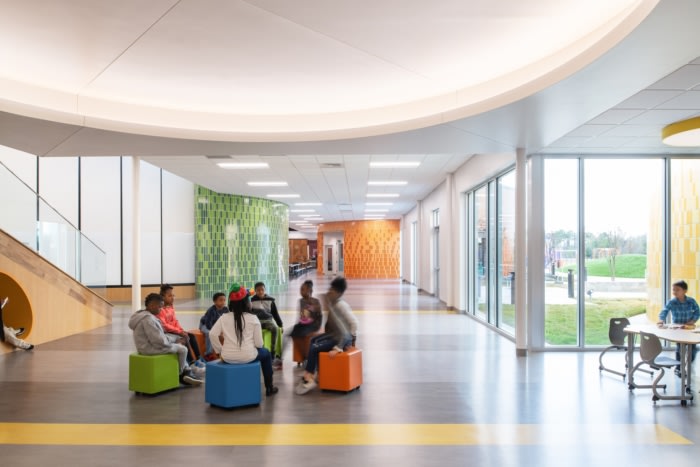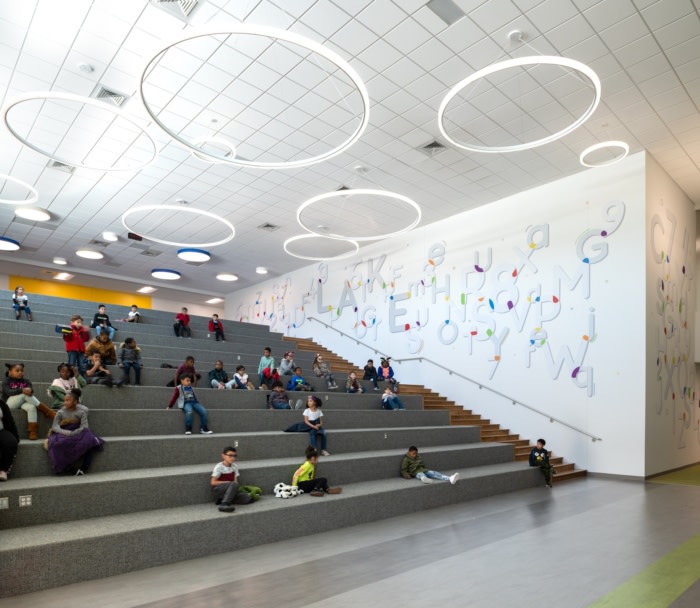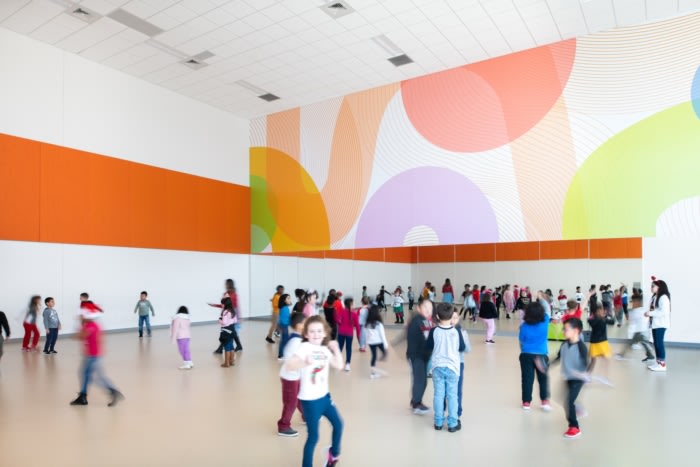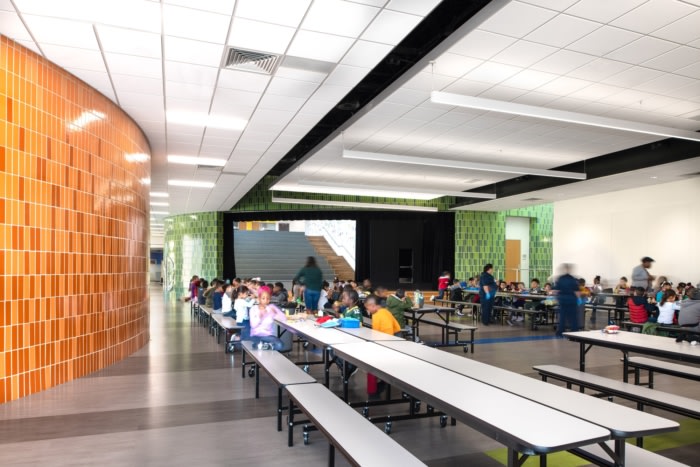Sheldon Lake Elementary School
Stantec completed the Sheldon Lake Elementary School with a focus on innovation and performing arts in Houston, Texas.
Sheldon Lake Elementary School emerged out of a districtwide initiative to roll out specialized learning programs to each of their six elementary schools. As one of two campuses with a focus on performing and visual arts (PVA), the goal for this new school of choice was to provide an open and engaging environment that uses student interests to excite them about learning.
As the architect, Stantec partnered with the district and Roz Keck, leading educational specialist and founding partner of N2 Learning, in an intensive design charette that approached every aspect of the facility through the lens of PVA. The team generated three concepts for consideration—concerto, ensemble, and interlude—each one bringing the programmatic spaces to the forefront of the school in different ways. The final design translation combines concerto, a design that showcases the facility’s unique purpose to the exterior, with ensemble, which recognizes the beauty created by each individual discipline while also acknowledging the masterpiece of all disciplines performing in concert.
Iconic features known as “drums” house the PVA programs, including a Blackbox theater, and art, music, dance, and design studios. These colorful drums serve as anchors that inform the school’s interior and exterior spatial relationships and help orient students as they move through the building. The two-story facility has an interesting and free-flowing design, where the Blackbox theater, dining, and library spaces don’t have walls but still have their own core. This creates a multi-configurable theater-in-the-round that can accommodate large group instruction and performances on one side and banquets on the other, even concurrently, providing added flexibility for both educational and community use.
While research indicates that an arts-centered curriculum is beneficial to language and reading development, the school also fills community amenity gaps by providing performance, gathering, and shared green spaces. Additionally, the facility helps enhance student health and well-being through biophilic design elements that offer abundant visual and physical access to the outdoors, make use of colors and patterns to evoke a sense of connection to nature from the interior environment, and encourage constant movement throughout the school. The overall design provides the campus with its own identity and responds to the scale of its users through a playful, intimate, and engaging environment.
The result is a facility that challenges the notion of hosting a specialized program as only one piece of the educational environment and instead makes one conceptualize the entire building as a vehicle for pedagogical choice. And those three initial design concepts? They now hang in the Principal’s office as a point of pride for the new school and the unique planning process that brought it to fruition.
Architect: Stantec
Photography: Luis Ayala


